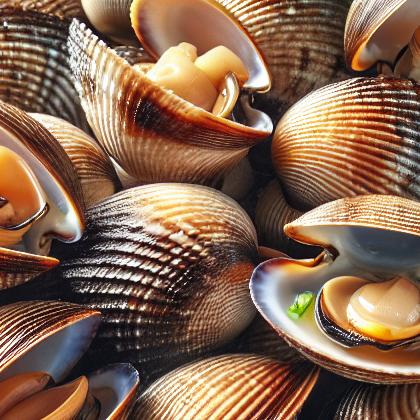Showing results for 'Clams'
close
Clams

The term clam generally refers to those bivalve molluscs that live buried in sand or silt, many of which are edible.Clams, like most molluscs, also have open circulatory systems, which means that their organs are surrounded by watery blood that contains nutrients and oxygen. They feed on plankton by filter feeding. Clams filter feed by drawing in water containing food using an incurrent siphon. The food is then filtered out of the water by the gills and swept toward the mouth on a layer of mucus. The water is then expelled from the animal by an ex-current siphon.
Clams Pairs With:
Food Item
Flavor Affinity Level

Did you know there are 145 food flavor pairings in my database for Clams available. What you are seeing above is a random list of 30 items which pair with Clams.
For the entire list, beautifully formatted, enter your email address and click the download button below, then I'll email it to you as a PDF.
Clams Properties:
| Food Property | Type | Description |
|---|---|---|
| Flavor Profile | Umami | Clams have a savory and slightly sweet flavor with hints of the ocean. |
| Texture | Firmness | Clams have a firm texture when cooked, but can become tender if overcooked. |
| Moisture | Clams are moist and juicy when cooked properly. | |
| Nutritional Value | Macronutrients | Clams are a good source of protein and low in fat. |
| Micronutrients | Clams are rich in vitamins and minerals such as iron, zinc, and vitamin B12. | |
| Cooking Behavior | Heat Conductivity | Clams cook quickly and evenly when exposed to heat. |
| Water Retention | Clams retain moisture well when cooked with liquid or steam. | |
| Oil Absorption | Clams do not absorb much oil when cooked. |
Food Pairing App - Version 1.2.0
